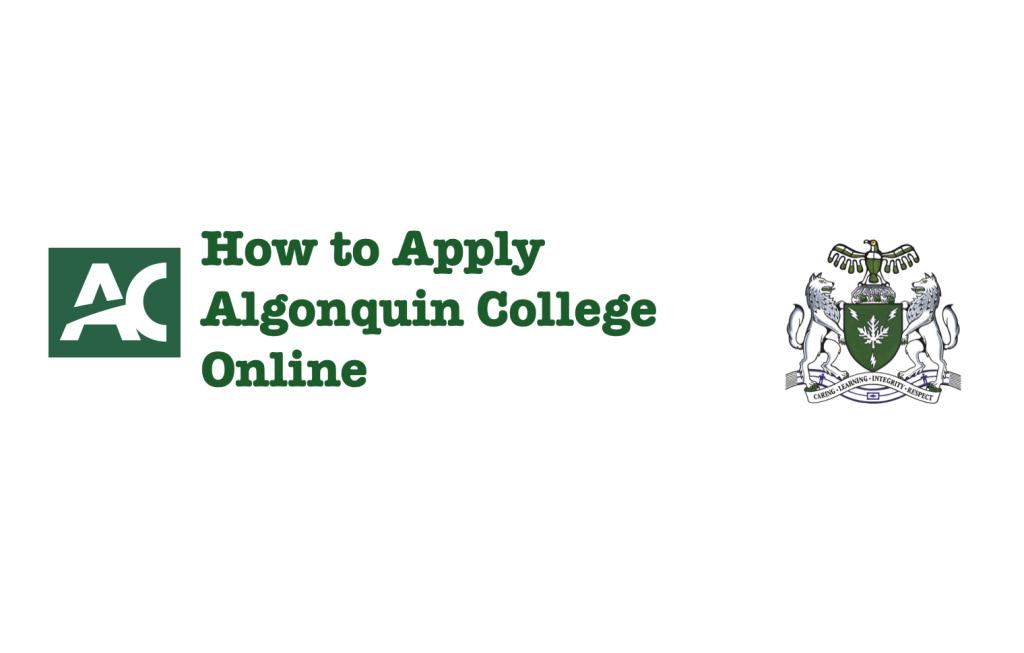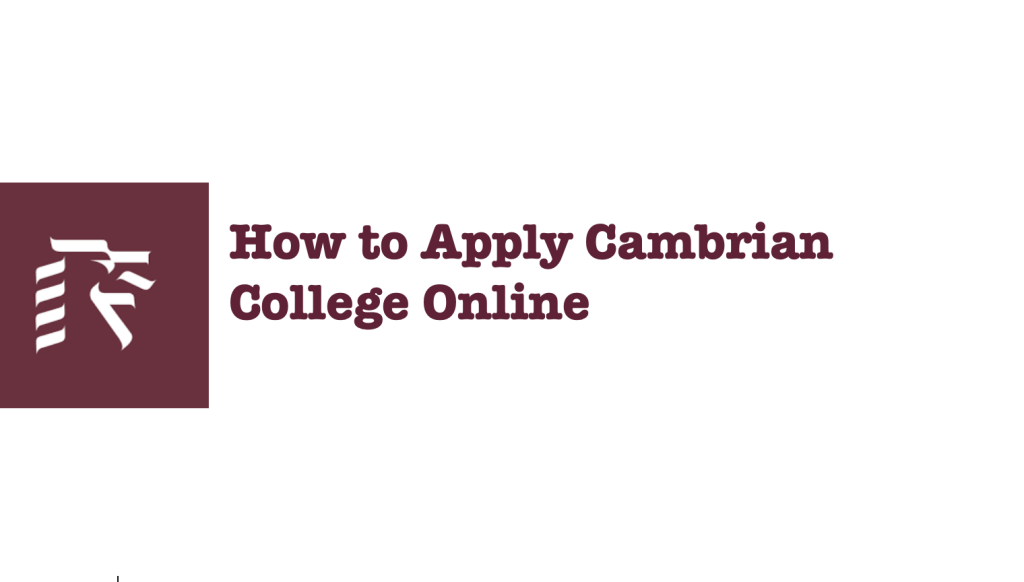How to Apply to Universities in Ontario as an International Applicant— Embarking on a journey to study abroad is an exciting and transformative experience. Ontario, Canada, with its world-class universities and diverse academic programs, has become a sought-after destination for international students. If you’re considering pursuing your education in Ontario, it’s essential to understand the application process specifically tailored for international applicants.
This comprehensive guide aims to provide international students with a step-by-step approach on how to apply to universities in Ontario, Canada. From researching universities and programs to preparing application materials and meeting admission requirements, this article will assist you in navigating the application process effectively and maximize your chances of securing admission to a university of your choice.
Table of Contents
Researching Ontario Universities
When applying to universities in Ontario, Canada as an international applicant, conducting thorough research is crucial to find institutions that align with your academic goals and provide a supportive environment. Consider the following aspects:
Explore University Options
Take the time to explore various universities in Ontario and gather information about their academic programs, faculties, research opportunities, campus culture, and international student support services. Visit university websites, attend virtual information sessions, or connect with current international students to gain insights into their experiences.
Read Also: 2023 Top 10 Best Universities in Ontario, Canada
Consider Programs and Fields of Study
Evaluate the programs and fields of study offered by each university. Consider your academic interests, career aspirations, and future goals. Look into the curriculum, faculty expertise, research opportunities, and any specialized programs or majors that align with your interests.
Evaluate University Rankings and Reputation
Take into account university rankings and reputation as part of your research. While rankings should not be the sole determining factor, they can provide insights into the quality of education and the reputation of the institution. Consider factors such as research output, faculty accomplishments, and global recognition.
Assess Campus Facilities and Resources
Consider the campus facilities and resources available at each university. Evaluate factors such as libraries, research centers, laboratories, student support services, cultural centers, and international student organizations. These resources can greatly enhance your academic and social experience while studying in Ontario.
Understanding Admission Requirements for International Students
To ensure a successful application, it is essential to understand the admission requirements set by Ontario universities. As an international applicant, the following requirements typically apply:
High School or Post-Secondary Transcripts
Submit official transcripts from your high school or any post-secondary institutions attended. Ensure that transcripts are translated into English, if necessary, and include grading scales and course descriptions.
Language Proficiency Tests
Most universities require proof of English language proficiency through tests such as the TOEFL or IELTS. Check the specific score requirements for each university and plan to take the test well in advance. Some universities may also accept other language proficiency tests like the PTE Academic.
Standardized Tests (if applicable)
Certain programs or universities may require standardized test scores such as the SAT or ACT. Research the requirements of your chosen program and university to determine if these tests are necessary.
Letters of Recommendation (if required)
Some universities may require letters of recommendation from teachers or mentors who can speak to your academic abilities and potential. Choose individuals who can provide a strong recommendation and give them sufficient time to write the letters on your behalf.
Statement of Purpose or Personal Statement
Prepare a well-crafted statement of purpose or personal statement that outlines your academic and career goals, reasons for choosing the specific university and program, and how your background and experiences make you a strong candidate. Tailor your statement to reflect your genuine passion and interest in the field of study.
Application Process Overview
Understanding the application process is crucial to stay organized and meet deadlines effectively. Consider the following steps:
Identify Application Deadlines
Take note of the application deadlines for each university and program. Note that deadlines may vary for undergraduate and graduate programs as well as for different categories of international applicants (e.g., early admission, regular admission).
Choose an Application Method
Most universities in Ontario accept online applications through their respective application portals. Familiarize yourself with the specific application system for each university and create an account if required.
Create an Application Timeline
Develop a timeline that outlines important application-related tasks and deadlines for each university. This will help you stay organized and ensure that you complete all requirements on time, including gathering documents, writing essays, and obtaining letters of recommendation.
Prepare Required Documents
Gather the necessary documents required for your application. This typically includes academic transcripts, language proficiency test scores, standardized test scores (if applicable), letters of recommendation, statement of purpose or personal statement, and any other supporting documents specified by the university.
Completing the Application
When completing your university application, attention to detail and accuracy are crucial. Follow these steps:
Fill Out the Application Form
Carefully fill out the online application form, ensuring that all sections are completed accurately. Provide your personal information, educational background, contact details, and any additional information requested.
Personal Information and Contact Details
Provide accurate personal information, including your full name, date of birth, citizenship, passport information, and contact details (address, phone number, email address).
Academic History and Transcripts
Enter your academic history, including information about your high school or post-secondary education. Provide details such as the names of institutions attended, dates of attendance, degrees earned, and grades obtained. Upload or send official transcripts as required.
Language Proficiency Test Scores
Report your official language proficiency test scores, such as the TOEFL or IELTS. Include the test dates and scores obtained in each section.
Standardized Test Scores (if applicable)
If required by the university or program, report your standardized test scores, such as the SAT or ACT. Include the test dates and scores obtained in each section.
Statement of Purpose or Personal Statement
Upload or enter your statement of purpose or personal statement as specified by the university. Follow any guidelines provided regarding word limits, formatting, and content.
Letters of Recommendation (if required)
Submit the required number of letters of recommendation as specified by the university. Provide the contact information of your recommenders, and ensure that they submit their letters directly to the university or through the designated application portal.
Application Fee
Pay the application fee as required by the university. Ensure that you have the necessary payment information and follow the specified method of payment.
Submitting the Application
Before submitting your application, review it thoroughly to ensure accuracy and completeness. Follow these steps:
Review and Proofread the Application
Carefully review all sections of the application for any errors or missing information. Proofread your statement of purpose or personal statement and other written components to ensure clarity and coherence. Check for any typos or grammatical errors.
Pay Attention to Submission Guidelines
Follow the submission guidelines provided by each university. Be aware of any file size limitations, document format requirements, and additional instructions for submitting supporting documents.
Submitting the Application Online or by Mail
Submit your application through the designated online application portal. Pay attention to any confirmation emails or receipts received upon successful submission. If a paper application is required, ensure that you follow the mailing instructions and send it within the specified deadline.
Tracking Application Progress
After submitting your application, it is essential to keep track of its progress. Consider the following steps:
Application Acknowledgment
Upon successful submission, the university will typically send you an acknowledgment or confirmation email. Save this email for reference and note any application ID or reference numbers provided.
Checking Application Status
Frequently check the application status portal provided by each university. This will allow you to monitor updates, track the receipt of supporting documents, and view any requests for additional information.
Contacting Admissions Offices
If you have any questions or concerns regarding your application, contact the admissions office of eachuniversity directly. They can provide guidance, clarify any queries you may have, and assist you throughout the application process.
Understanding the Admission Decision
Once the admission decision is released, it’s important to understand its implications and take appropriate action:
Acceptance, Rejection, or Conditional Offer
Universities may offer you admission, reject your application, or provide a conditional offer. Understand the terms and conditions associated with each decision.
Responding to the Admission Decision
Follow the instructions provided by the university to accept or decline the offer of admission within the specified deadline. Be mindful of any deposit or confirmation fee required.
Meeting Conditions, if Applicable
If you receive a conditional offer, carefully review and fulfill the conditions outlined by the university. This may include achieving certain grades, submitting additional documents, or meeting specific language proficiency requirements.
Applying for Scholarships and Financial Aid
Consider exploring scholarship opportunities and financial aid options to support your education in Ontario. Follow these steps:
Research Scholarship Opportunities
Explore scholarships specifically available for international students in Ontario universities. Check university websites, scholarship databases, and external funding sources to identify potential scholarship opportunities. Pay attention to eligibility criteria, application deadlines, and required documents.
Explore Financial Aid Options
Familiarize yourself with the financial aid options provided by each university. This may include grants, loans, or work-study programs. Review the eligibility requirements and application processes for each financial aid option.
Gather Required Documentation
Prepare the necessary documentation to support your scholarship and financial aid applications. This may include academic transcripts, financial statements, letters of recommendation, and any additional documentation required by specific scholarships or financial aid programs.
Submitting Scholarship Applications:
Follow the guidelines provided by each scholarship program for submitting your applications. Prepare your scholarship essays or personal statements, ensuring they align with the specific requirements of each scholarship. Submit the applications online or by mail, as specified by the scholarship provider.
Conclusion
Applying to universities in Ontario, Canada as an international applicant can be a rewarding yet complex process. By following the step-by-step guidelines outlined in this comprehensive guide, you can navigate the application process effectively and increase your chances of securing admission to a university of your choice.
Remember to research universities and programs, understand admission requirements, meet application deadlines, and seek assistance when needed. Pursuing higher education in Ontario offers a wealth of opportunities for personal growth and academic excellence. With proper guidance, international applicants can embark on an exciting academic journey in one of Canada’s most diverse and vibrant provinces.



